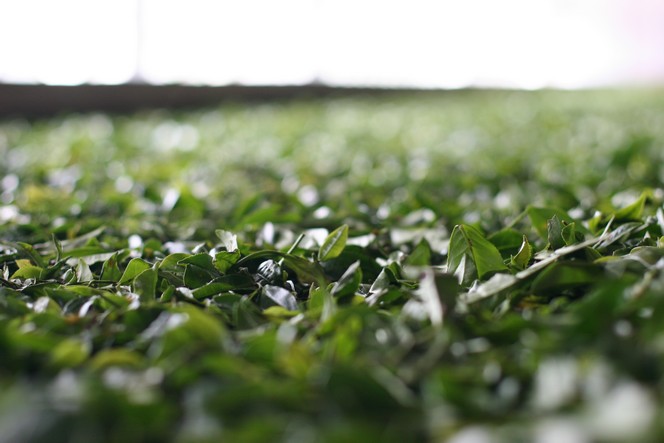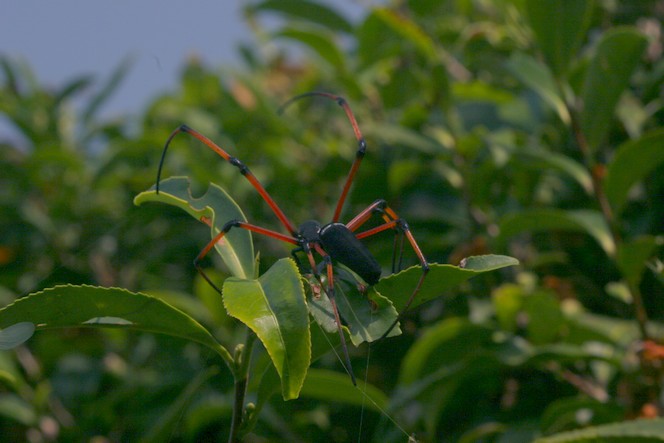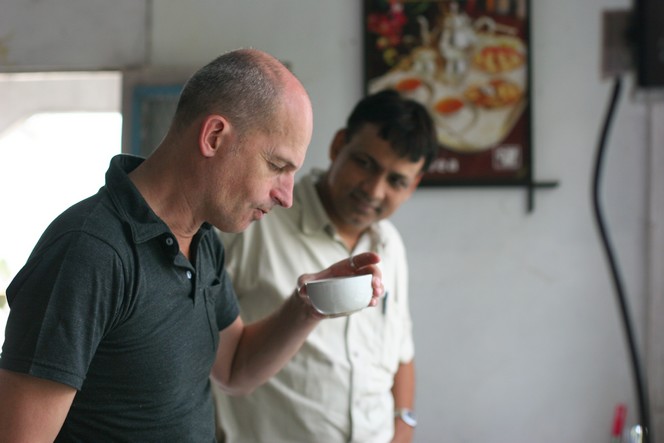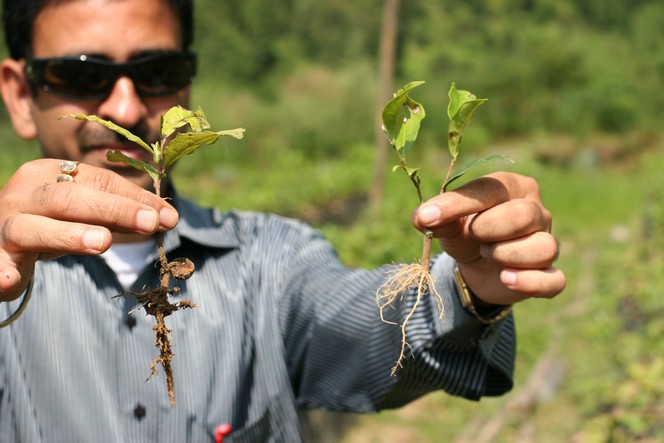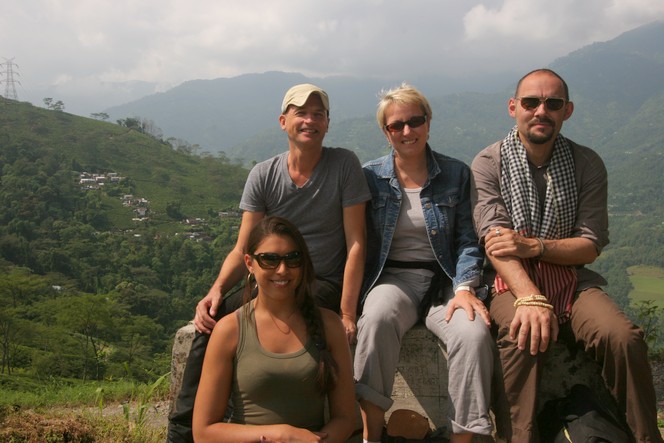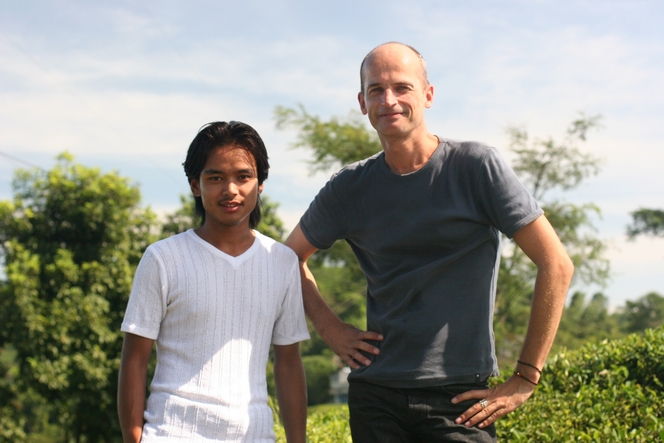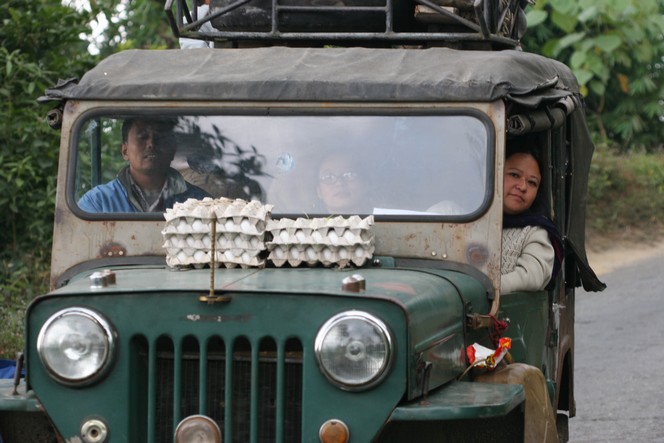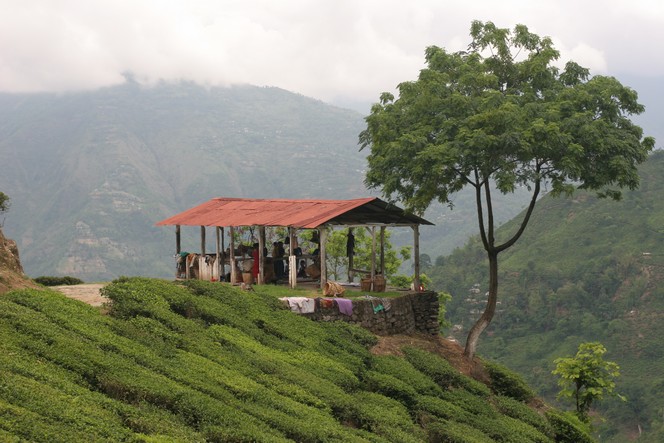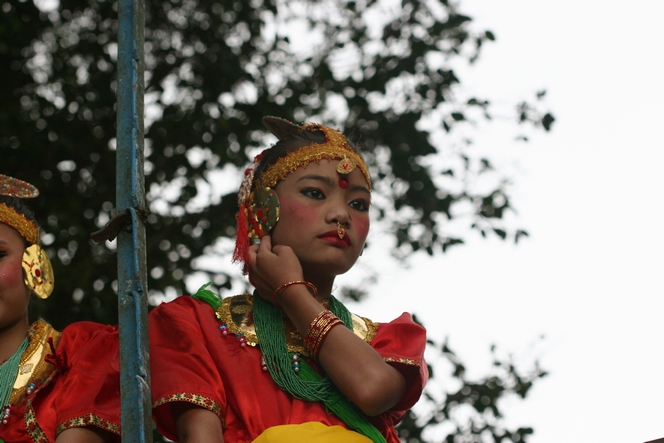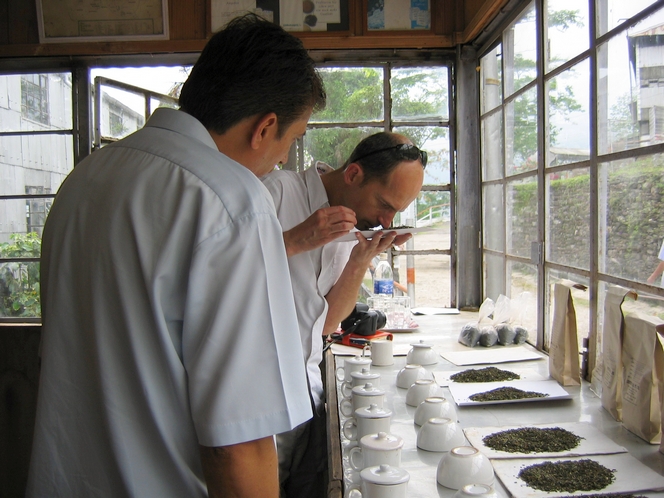The withering of tea leaves can take several tens of hours, during which time the leaves will lose some of their water content. In order to avoid the risk of oxidisation, hot or cold air is sometimes blown beneath the leaves. At this point, the air is filled with a wonderful fragrance, very typical and very floral, which can be detected for hundreds of metres around. I never grow tired of this smell. I find it captivating.
Elegant spider living among organic tea plants
With many plantations going organic, it is high time I introduced you to some of the nice animals that live among the tea plants, where the lack of pesticides makes for a quieter life. In terms of insects, for example, there are two categories: those that are detrimental to tea production, and those whose presence is beneficial. Among the harmful insects is the inchworm, which I talked about recently. There are many others. In terms of beneficial insects, the ladybird is one of the best known. Its rather comical appearance masks a ferocious predator that will destroy colonies of aphids with a remarkable efficiency.
As for spiders, some are harmful, while others can be useful. I don’t know which category this one falls into, but it is large and unusually elegant. I don’t even know its name, so if there are any spider lovers among you, perhaps you could introduce it to us.
I have just tasted the very first teas of the season
In Darjeeling, October marks the start of the autumn tea harvest. Once the Diwali and Dussehra festivals are over, the workers start plucking the leaves, of which there are now too many after the holidays. A week later, they carry out a more delicate plucking which will serve to produce a high quality tea.
Here, with Abishek Dev, grower at the Teesta Valley Tea Estate, I am tasting the very first teas of the season.
There are two ways of growing a new tea plant
There are two ways of growing a new tea plant. You can plant a seed, or a cutting.
Here, Rajiv Gupta, grower at the Tumsong Tea Estate, explains how the roots of a tea plant grown from seed (on the left) reach deep into the ground, while the roots of a tea plant grown from a cutting (on the right) spread out and don’t go very deep. This has important consequences in terms of how the plant withstands bad weather, dryness and soil erosion.
Le Palais des Thés team in Darjeeling
Once a year, I ask some of the senior staff at Le Palais des Thés who have not yet been on a trip with me to pack their bags and accompany me into the tea mountains. There is nothing like a visit to the plantations to compare your theoretical knowledge with reality, and bring a fresh impetus to your learning.
So, in October 2011, here we are: Sarah Daubron (head of customer services), myself, Christine Delétrée (network director) and Paul Roudez (manager of the Rue de l’Annonciation), posing for a group photo by the Tumsong factory in Darjeeling (India).
A thought for Seewan, a long-time friend
A few days ago I was shocked to hear of the brutal death of Seewan. Seewan was my driver for nearly 10 years. Every time I went to Darjeeling he would be there, waiting for me at Bagdogra airport, to take me into the mountains. He was extremely kind and never complained about anything. He was always cheerful, whatever the situation. He knew every area I visited, every tea plantation, every road. Seewan had become a good friend, and his murder has stunned and saddened me a great deal.
Carton of eggs on the bonnet of a Jeep in Darjeeling
It’s just a detail, but something has intrigued me for years in Darjeeling. Why do people returning from market carry their shopping on their knees, with the notable exception of the cartons of eggs, which the community taxi driver places without hesitation on the bonnet of his Jeep?
When you know how bumpy the roads are in this region, and the hours of driving required just to get from one village to the next, it makes you wonder where they get the crazy idea of risking their fresh eggs in this way.
So I decided to investigate the matter, and I questioned several people while they were placing the cartons on the bonnet. I asked them why they transported their eggs like that. And each time I got the same answer, accompanied by a shrug of the shoulders, as if I had asked the most ridiculous question in the world.
-It’s where they are safest.
It’s true that when you get more than 20 people in a 4×4, a fragile item is more likely to get crushed inside the vehicle. And it’s true that there is so much weight thrown around at the rear of the vehicle that the most delicate items are best placed in front.
This shelter is where the pluckers gather
When it is time to take a break, the pluckers in Darjeeling gather in the shade to drink tea or eat their meals. We would all love to be able to have lunch every day in such a peaceful setting…
These shelters are also where the pluckers take the leaves to be collected and weighed. Once gathered together, the leaves are loaded onto a trailer and a tractor promptly tows them away to the factory for processing.
Dancer ready to go on stage in Darjeeling
On Sundays, many people gather in Darjeeling’s main square. Sometimes political meetings are held there. At other times, entertainment draws the crowds. Today, just off the famous square, called Chowrasta, I met this dancer who was getting ready to go on stage along with her fellow dancers, adorned with the same jewellery.
On my way to Darjeeling, I often stop at Longview
I’m on my way to Darjeeling. On my journey, I sometimes stop at Longview Tea Estate, the first tea plantation in this appellation. It doesn’t always produce great teas, as not all of its various plots get enough sun, but at certain times of the year, on the highest part of the plantation, Longview produces some very good teas, earlier than other gardens. Here, under the watchful eye of the grower, I’m assessing the aromas of the different lots I’m going to taste.

